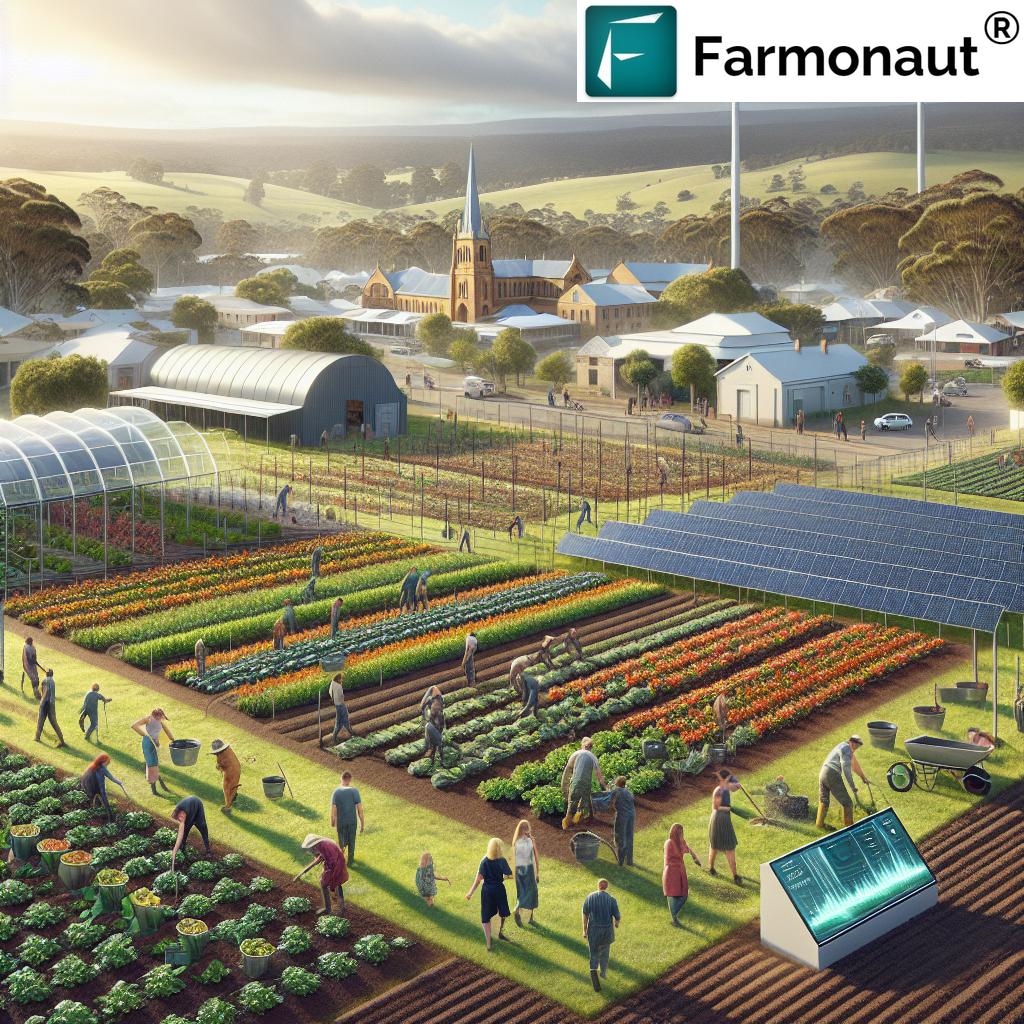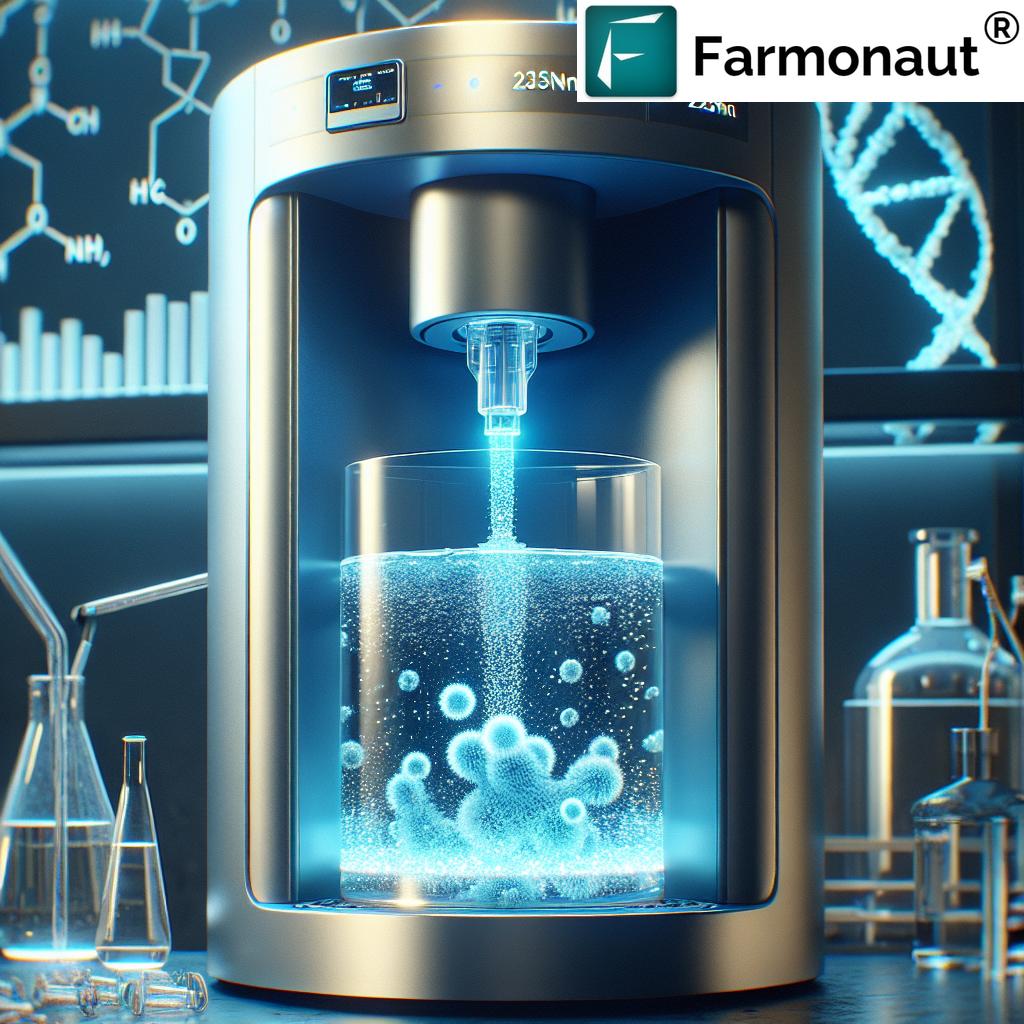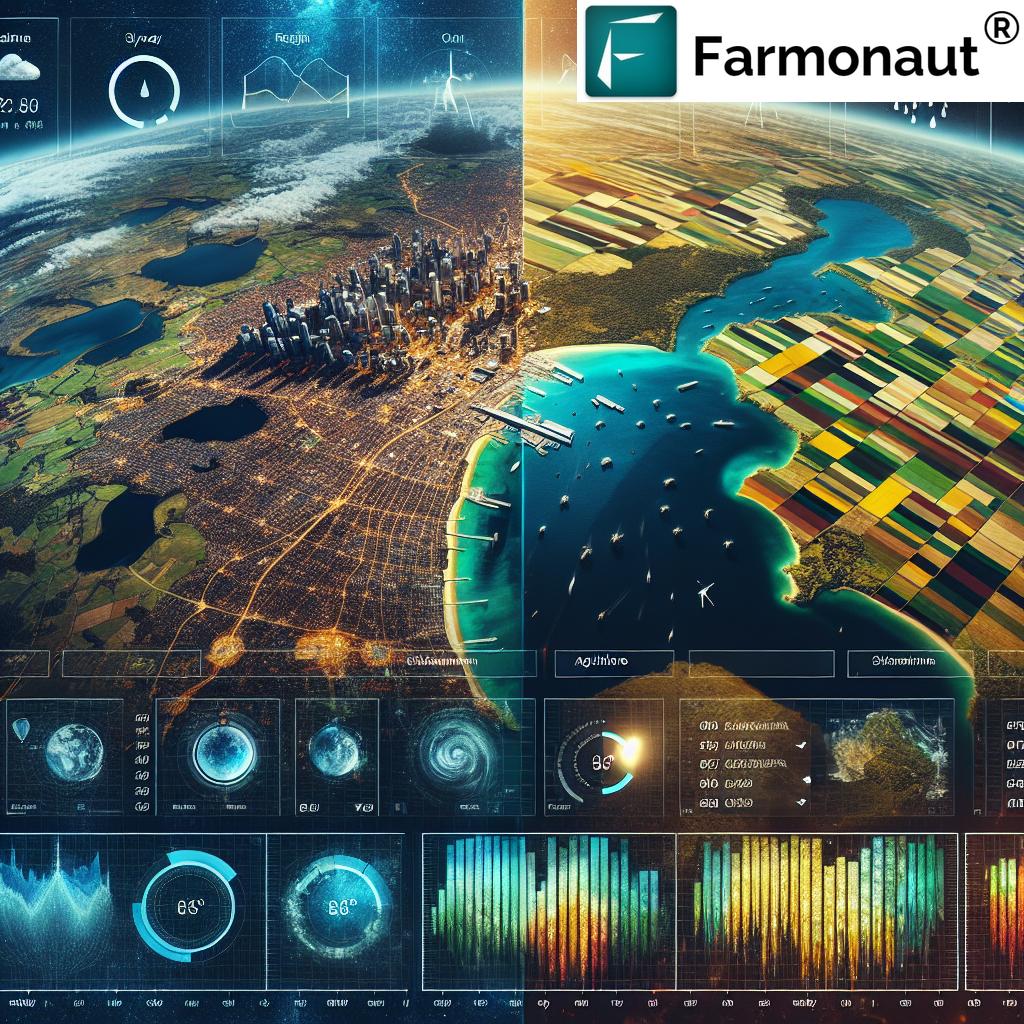Revolutionizing Queensland’s Horticulture: Innovative Pest Management Strategies for Sustainable Crop Production
“Insect pests cost Australian producers billions of dollars annually in agricultural losses.“
Welcome to our comprehensive exploration of innovative pest management strategies that are transforming Queensland’s horticulture industry. As we delve into this crucial topic, we’ll uncover the latest trends, techniques, and technologies that are helping growers combat pest challenges while promoting sustainable crop production.
The Evolving Landscape of Pest Management in Queensland’s Horticulture
In recent years, pest management in agriculture has remained a critical challenge for Australian growers, particularly in Queensland’s thriving horticulture sector. Insect pests continue to pose significant threats, causing substantial economic losses and compromising crop quality. However, the industry is rapidly evolving, embracing innovative approaches to tackle these persistent issues.
At Farmonaut, we recognize the importance of staying at the forefront of agricultural technology to support growers in their pest management efforts. Our satellite-based farm management solutions provide valuable insights that can complement traditional pest control methods and contribute to more effective, sustainable farming practices.
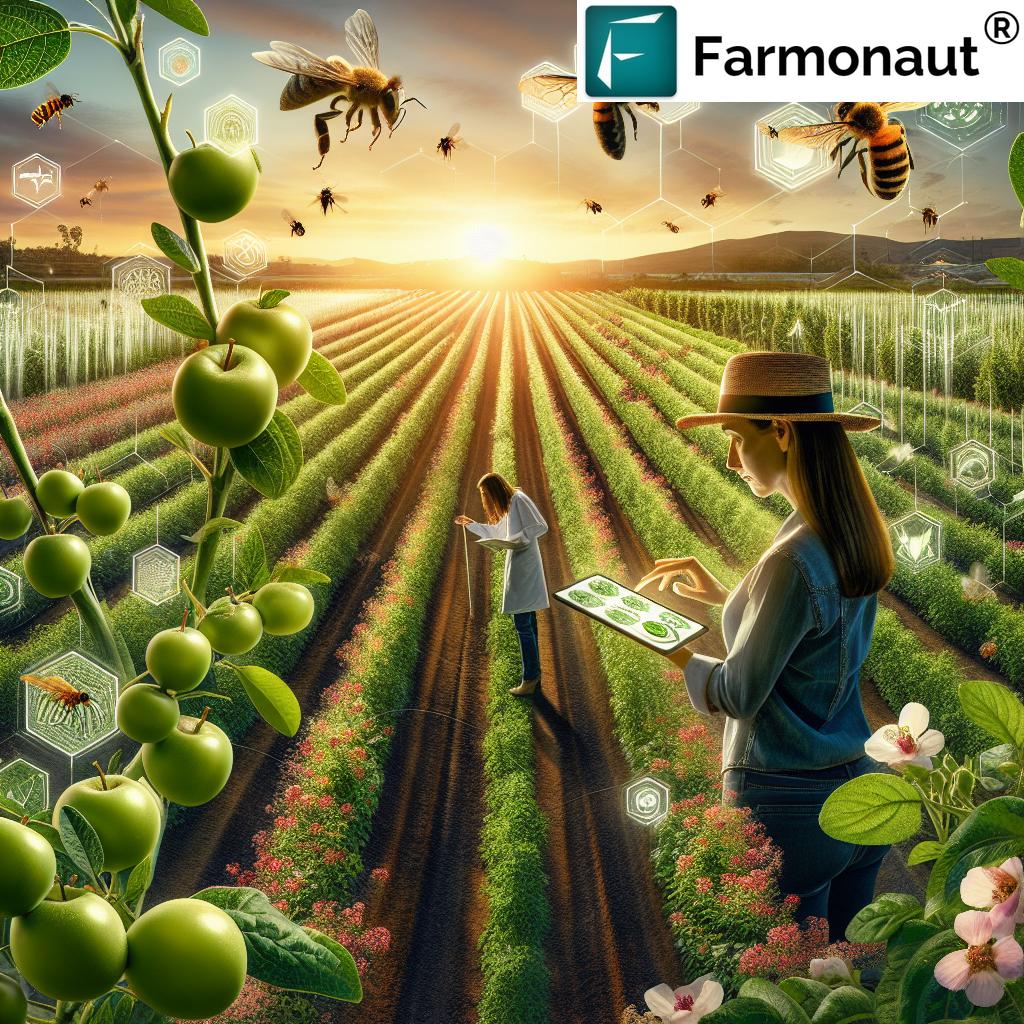
The Pest Sense Workshop: A Hub of Innovation
Recently, the Pest Sense workshop emerged as a pivotal event in Queensland’s agricultural calendar. This gathering brought together growers, entomologists, agronomists, and industry experts to explore cutting-edge pest management strategies and agtech solutions for pest monitoring. The workshop served as a platform for knowledge exchange and collaboration, highlighting the collective effort required to address the evolving challenges in crop protection.
“Queensland’s Pest Sense workshop explored integrated pest management techniques to combat threats like Fall Armyworm and Queensland Fruit Fly.“
Key Highlights from the Workshop
- Integrated Pest Management (IPM) Techniques: Participants delved into advanced IPM strategies, emphasizing the use of beneficial insects and physical barriers to combat persistent threats.
- Focus on Major Threats: Special attention was given to combating the Fall Armyworm (FAW) and Queensland Fruit Fly (Qfly), two pests that have significantly impacted horticultural crops in the region.
- Collaborative Approaches: The importance of grower collaboration and the implementation of area-wide programs for improved pest detection and control was a central theme.
- Sustainable Solutions: Discussions centered on sustainable pest control methods in farming, including innovative practices like cover cropping and inter-row management to naturally deter pests.
As we at Farmonaut continue to develop our satellite-based crop monitoring technologies, we’re excited to see how these can be integrated with the innovative strategies discussed at the Pest Sense workshop. Our Jeevn AI Advisory System, for instance, can provide real-time insights that complement traditional pest management techniques, offering a more holistic approach to crop protection.
The Economic Impact of Agricultural Pests in Queensland
The economic repercussions of insect pests on Australian horticulture cannot be overstated. These tiny invaders cost producers billions of dollars annually, impacting not only crop yields but also quality and market value. In Queensland, where horticulture is a cornerstone of the agricultural sector, the stakes are particularly high.
Breaking Down the Costs
- Direct Crop Losses: Pests can decimate entire fields, leading to significant reductions in harvestable produce.
- Quality Degradation: Even when crops survive, pest damage can lower their quality, resulting in reduced market prices.
- Increased Production Costs: The need for pest control measures adds to the overall cost of production.
- Market Access Issues: Pest infestations can lead to quarantine restrictions, limiting access to lucrative markets.
At Farmonaut, we understand the gravity of these economic challenges. Our satellite-based crop health monitoring system can help growers detect potential pest issues early, potentially saving millions in crop losses. By providing real-time data on vegetation health (NDVI) and other critical metrics, we empower farmers to make informed decisions about pest management strategies.
Innovative Pest Management Strategies for Queensland’s Horticulture
The Pest Sense workshop highlighted several innovative approaches to pest management that are gaining traction in Queensland’s horticultural industry. These strategies focus on sustainable, environmentally friendly methods that reduce reliance on chemical pesticides while maintaining crop health and productivity.
1. Biological Control: Harnessing Nature’s Balance
One of the most promising approaches discussed at the workshop was the use of biological control agents. This method involves introducing natural predators or parasites of pest species to maintain ecological balance and reduce pest populations.
- Beneficial Insects: Ladybugs, lacewings, and predatory mites are being employed to control aphids, mites, and other soft-bodied pests.
- Parasitic Wasps: These tiny warriors are effective against caterpillars and other larval pests, including the dreaded Fall Armyworm.
- Entomopathogenic Fungi: Certain fungi species are being used to control a wide range of insect pests, offering a natural alternative to chemical insecticides.
By integrating biological control methods with Farmonaut’s satellite-based crop monitoring, growers can track the effectiveness of these natural pest management strategies in real-time, adjusting their approach as needed for optimal results.
2. Physical Barriers: A Simple Yet Effective Approach
The workshop also emphasized the importance of physical barriers in pest management. These methods create a protective shield around crops, preventing pests from reaching and damaging plants.
- Netting Systems: Fine mesh netting can effectively exclude flying pests like fruit flies and moths.
- Reflective Mulches: These materials confuse and repel certain flying insects, reducing pest pressure on crops.
- Sticky Traps: Colored traps attract and capture flying pests, serving both as a control method and a monitoring tool.
Farmonaut’s fleet and resource management tools can help growers optimize the deployment and maintenance of these physical barriers across their farms, ensuring maximum protection with minimal labor costs.
3. Cover Cropping and Inter-row Management
Sustainable pest control in farming was a key focus of the workshop, with particular emphasis on cover cropping and inter-row management techniques. These practices not only help in pest control but also contribute to overall soil health and biodiversity.
- Cover Crops: Planting species like clover or buckwheat between main crop rows can attract beneficial insects and repel pests.
- Trap Crops: Certain plants can be used to lure pests away from the main crop, concentrating them for easier control.
- Companion Planting: Strategic placement of complementary plants can naturally deter pests and attract beneficial insects.
Our satellite imagery at Farmonaut can help growers monitor the health and effectiveness of cover crops and inter-row plantings, providing valuable data to refine these strategies over time.
4. Pheromone Disruption: Confusing the Enemy
Pheromone disruption techniques are gaining popularity as an environmentally friendly pest management strategy. This method involves flooding the area with synthetic pheromones to confuse male insects and disrupt their mating patterns.
- Mating Disruption: Effective against moths and certain fruit flies, reducing pest populations over time.
- Monitoring Traps: Pheromone-baited traps help in early detection and population monitoring of specific pests.
- Targeted Application: This method allows for pest control without harming beneficial insects or pollinators.
Farmonaut’s AI-driven advisory system can help growers determine the optimal timing and locations for pheromone applications based on pest life cycles and environmental conditions.
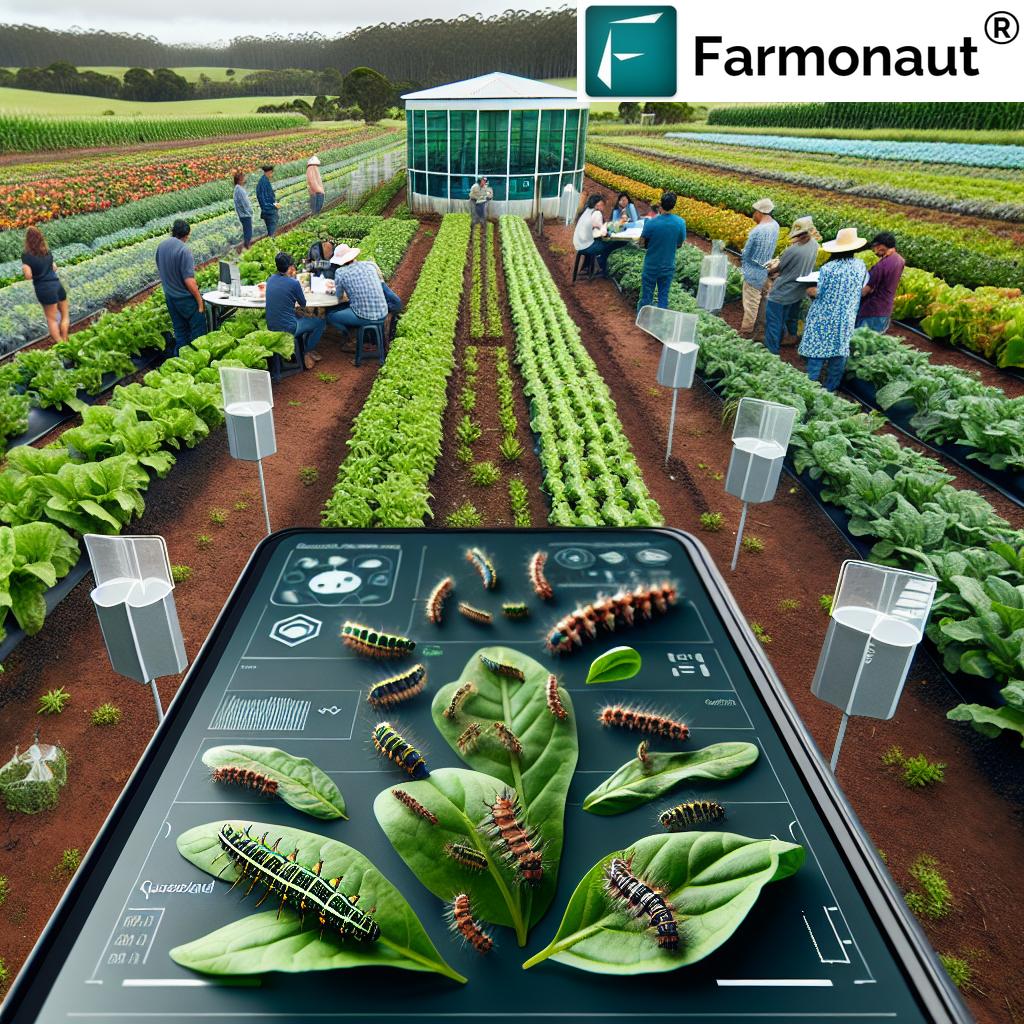
Agtech Solutions for Advanced Pest Monitoring
The Pest Sense workshop highlighted the growing role of agricultural technology in pest management. These innovative solutions are revolutionizing how growers detect, monitor, and respond to pest threats.
1. Satellite-Based Crop Monitoring
At Farmonaut, we’re proud to be at the forefront of satellite-based crop monitoring technology. Our system offers several advantages for pest management:
- Early Detection: Satellite imagery can reveal changes in crop health before they’re visible to the naked eye, allowing for early intervention against pest infestations.
- Large-Scale Monitoring: Our technology enables growers to monitor vast areas efficiently, identifying potential hotspots for pest activity.
- Historical Data Analysis: By comparing current crop conditions with historical data, we can help predict pest outbreaks based on patterns and trends.
To learn more about how our satellite-based solutions can enhance your pest management strategies, visit our web app or explore our API for custom integrations.
2. IoT Sensors and Smart Traps
The integration of Internet of Things (IoT) technology in pest management is opening new possibilities for real-time monitoring and rapid response.
- Automated Pest Counting: Smart traps with built-in cameras and AI can identify and count captured pests, providing accurate population data.
- Environmental Monitoring: IoT sensors can track temperature, humidity, and other factors that influence pest activity, helping predict outbreaks.
- Alert Systems: These devices can send immediate notifications to growers when pest numbers exceed predefined thresholds.
While Farmonaut doesn’t directly manufacture these devices, our platform can integrate data from IoT sensors to provide a comprehensive view of farm health and pest pressure.
3. Drone Technology for Precision Pest Management
Drones are becoming increasingly valuable tools in the fight against agricultural pests, offering high-resolution imaging and targeted treatment capabilities.
- Aerial Surveys: Drones equipped with multispectral cameras can detect pest damage and stress patterns across large areas quickly.
- Precision Spraying: Some advanced drones can perform targeted pesticide applications, reducing overall chemical use and environmental impact.
- Beneficial Insect Deployment: Drones are being explored as a means to distribute beneficial insects over crops, enhancing biological control efforts.
Farmonaut’s satellite data can be complemented by drone imagery for an even more detailed view of crop health and pest activity. Our platform is designed to integrate various data sources, providing growers with comprehensive insights for informed decision-making.
Area-Wide Management Programs: A Collaborative Approach
One of the key takeaways from the Pest Sense workshop was the emphasis on area-wide management programs. These collaborative initiatives involve coordinated efforts across multiple farms and even entire regions to tackle pest issues collectively.
Benefits of Area-Wide Programs
- Increased Effectiveness: Coordinated actions prevent pests from simply moving between farms, leading to more sustainable population control.
- Cost Efficiency: Shared resources and knowledge can reduce the financial burden on individual growers.
- Improved Data Collection: Large-scale programs provide more comprehensive data on pest movements and population dynamics.
- Reduced Pesticide Use: Coordinated efforts often result in more targeted and efficient pest control, minimizing the need for widespread chemical applications.
At Farmonaut, we’re excited about the potential of our technology to support area-wide management programs. Our satellite-based monitoring can provide a bird’s-eye view of pest pressure across entire regions, helping coordinate responses and track program effectiveness.
Implementing Area-Wide Programs in Queensland
Queensland’s horticultural industry is increasingly adopting area-wide management approaches, particularly for persistent threats like the Queensland Fruit Fly (Qfly) and Fall Armyworm (FAW).
- Qfly Management: Coordinated trapping, baiting, and sterile insect release programs are being implemented across fruit-growing regions.
- FAW Response: Growers are collaborating on monitoring networks and sharing best practices for managing this invasive pest.
- Data Sharing Platforms: Digital tools are being developed to facilitate real-time information exchange between growers and researchers.
Farmonaut’s platform can serve as a valuable tool in these area-wide efforts, providing a centralized system for data collection, analysis, and visualization across multiple farms and regions.
The Role of Climate and Seasonal Conditions in Pest Management
Understanding the impact of climate and seasonal conditions on pest populations is crucial for effective management strategies. The Pest Sense workshop highlighted the need for adaptive approaches that account for changing environmental factors.
Climate Change and Pest Dynamics
- Shifting Ranges: Warming temperatures are allowing some pest species to expand their geographical range, posing new threats to previously unaffected areas.
- Altered Life Cycles: Changes in temperature and rainfall patterns can affect pest life cycles, potentially leading to more generations per season.
- Extreme Weather Events: Droughts, floods, and heatwaves can stress crops, making them more susceptible to pest attacks.
Farmonaut’s satellite-based monitoring system includes weather data integration, allowing growers to correlate pest activity with specific environmental conditions. This insight can be invaluable for predicting and preparing for pest outbreaks.
Seasonal Pest Forecasting
Developing accurate seasonal pest forecasts is becoming increasingly important for proactive management. These forecasts consider factors such as:
- Winter Survival Rates: Milder winters can lead to higher pest survival, potentially resulting in larger populations in the following growing season.
- Spring Emergence Timing: Earlier warm temperatures can trigger earlier pest emergence, affecting the timing of control measures.
- Rainfall Patterns: Changes in precipitation can influence both pest populations and the effectiveness of certain control methods.
Our AI-driven advisory system at Farmonaut incorporates these seasonal factors into its recommendations, helping growers stay ahead of potential pest issues throughout the year.
Economic Considerations in Innovative Pest Management
While the environmental benefits of sustainable pest management are clear, the economic aspects are equally important for growers. The Pest Sense workshop addressed the cost-benefit analysis of implementing innovative pest control strategies.
Initial Investment vs. Long-term Savings
- Technology Adoption: While there may be upfront costs for implementing new technologies like satellite monitoring or IoT sensors, these can lead to significant long-term savings through improved pest management efficiency.
- Biological Control Agents: Although purchasing beneficial insects may seem costly initially, it can reduce the need for chemical pesticides over time, potentially lowering overall expenses.
- Infrastructure for Physical Barriers: Installing netting systems or other physical barriers requires an initial investment but can provide lasting protection against pests, reducing ongoing control costs.
At Farmonaut, we understand the importance of balancing innovation with economic feasibility. Our subscription-based model is designed to make advanced crop monitoring technology accessible to growers of all sizes, helping them maximize their return on investment in pest management strategies.
Market Premiums for Sustainable Produce
Adopting innovative pest management strategies can also open up new market opportunities:
- Organic Certification: Many of the discussed techniques align with organic farming practices, potentially allowing growers to access premium organic markets.
- Sustainable Branding: Consumers are increasingly valuing sustainably produced food, creating opportunities for growers to differentiate their products in the marketplace.
- Export Opportunities: Some international markets have strict pesticide residue limits, making produce grown with minimal chemical inputs more desirable.
Farmonaut’s blockchain-based traceability solution can help growers demonstrate their sustainable pest management practices to consumers and buyers, potentially commanding higher prices for their produce.
The Future of Pest Management in Queensland’s Horticulture
As we look to the future, it’s clear that pest management in Queensland’s horticulture sector will continue to evolve. The Pest Sense workshop provided a glimpse into some of the emerging trends and technologies that are likely to shape the industry in the coming years.
Emerging Technologies
- AI and Machine Learning: Advanced algorithms will improve pest prediction models and automate decision-making processes in pest management.
- Gene Editing: CRISPR and other gene-editing technologies may be used to develop pest-resistant crop varieties or to create more effective biological control agents.
- Nanotechnology: Nano-formulations of pesticides and fertilizers could provide more targeted and efficient delivery methods, reducing environmental impact.
At Farmonaut, we’re committed to staying at the forefront of these technological advancements, continuously improving our platform to provide growers with the most cutting-edge tools for pest management and crop protection.
Policy and Regulatory Considerations
The future of pest management will also be shaped by evolving policies and regulations:
- Pesticide Restrictions: Increasing concerns about environmental and health impacts may lead to stricter regulations on chemical pesticide use.
- Biosecurity Measures: As global trade continues to grow, stricter biosecurity protocols may be implemented to prevent the introduction of new pest species.
- Incentives for Sustainable Practices: Government programs may offer financial incentives for growers adopting sustainable pest management strategies.
Our team at Farmonaut is dedicated to ensuring our technology remains compliant with evolving regulations while helping growers adapt to changing policy landscapes.
Comparison of Pest Management Strategies in Queensland Horticulture
| Crop Type | Common Pests | Traditional Control Methods | Innovative Strategies | Estimated Effectiveness (%) |
|---|---|---|---|---|
| Tomatoes | Whiteflies, Thrips, Fruit Fly | Chemical sprays, Sticky traps | Beneficial insects, UV-reflective mulch, Pheromone disruption | 70-85% |
| Citrus | Queensland Fruit Fly, Scale Insects | Baiting, Cover sprays | Area-wide management, Sterile insect technique, Netting systems | 75-90% |
| Macadamias | Fruit-spotting Bug, Macadamia Nut Borer | Broad-spectrum insecticides | Trap cropping, Biological control agents, Orchard hygiene practices | 65-80% |
| Strawberries | Spider Mites, Thrips | Miticides, Insecticides | Predatory mites, Biodegradable mulch, Controlled environment production | 80-95% |
| Avocados | Fruit-spotting Bug, Tea Red Spider Mite | Regular pesticide applications | Cover crops, Pruning for improved air circulation, Drone-based monitoring | 70-85% |
Conclusion: A New Era of Sustainable Pest Management
As we’ve explored throughout this blog post, the landscape of pest management in Queensland’s horticulture sector is undergoing a significant transformation. The innovative strategies and technologies discussed at the Pest Sense workshop represent a shift towards more sustainable, efficient, and environmentally friendly approaches to crop protection.
From the integration of biological control agents and physical barriers to the adoption of cutting-edge agtech solutions like satellite monitoring and IoT sensors, growers now have a diverse toolkit at their disposal. These methods, combined with collaborative efforts like area-wide management programs, are paving the way for a more resilient and productive horticultural industry.
At Farmonaut, we’re excited to be part of this revolution in pest management. Our satellite-based crop monitoring technology, AI-driven advisory systems, and blockchain traceability solutions are designed to complement and enhance these innovative strategies. By providing growers with real-time data, predictive insights, and decision support tools, we aim to contribute to the ongoing success and sustainability of Queensland’s horticulture sector.
As we look to the future, it’s clear that the integration of technology, ecological understanding, and collaborative approaches will be key to addressing the ever-evolving challenges of pest management. By embracing these innovations and continuing to adapt and learn, Queensland’s horticultural industry is well-positioned to thrive in the face of pest pressures while maintaining its commitment to sustainable and productive farming practices.
FAQ Section
Q1: What are the most significant pest threats to Queensland’s horticulture?
A1: The most significant pest threats include the Queensland Fruit Fly (Qfly), Fall Armyworm (FAW), fruit-spotting bugs, and various species of thrips and mites. These pests can cause substantial damage to a wide range of horticultural crops, impacting both yield and quality.
Q2: How does satellite-based crop monitoring help in pest management?
A2: Satellite-based crop monitoring, like the technology offered by Farmonaut, helps in early detection of pest infestations by identifying changes in crop health before they’re visible to the naked eye. It allows for large-scale monitoring, historical data analysis, and can be integrated with other pest management strategies for more effective control.
Q3: What are the benefits of area-wide pest management programs?
A3: Area-wide pest management programs offer increased effectiveness by preventing pests from simply moving between farms. They also provide cost efficiency through shared resources, improved data collection on pest movements, and often result in reduced pesticide use across the entire area.
Q4: How is climate change affecting pest management in Queensland?
A4: Climate change is impacting pest management by altering pest ranges, life cycles, and population dynamics. Warmer temperatures can lead to increased pest survival rates and more generations per season. It’s also causing more frequent extreme weather events, which can stress crops and make them more susceptible to pest attacks.
Q5: What are some emerging technologies in pest management?
A5: Emerging technologies in pest management include AI and machine learning for improved pest prediction, gene editing for developing pest-resistant crops, nanotechnology for more targeted pesticide delivery, and advanced IoT sensors and drones for real-time pest monitoring and targeted control measures.












